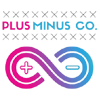Transitioning to a Sustainable Lifestyle: Where to Begin

We can slowly but surely feel the impacts of climate change in our lives. Longer, intense droughts that threaten our food security, colder and harsher winters, sea levels rising and warmer oceans that can submerge cities in the next decades.
Albeit large companies and rich people whom often exploit nature should be held accountable for the unprecedented rise of carbon in our atmosphere over the years. However, as consumers of the products these companies produce, we have to be conscious and mindful of our purchases to let these companies know that we are expecting more accountability from them. As consumers we have the option to live sustainably to lessen our overconsumption and live well within our means. It is important to note that our planet is not necessarily dying because, it is us humans that will have a more difficult time finding safe places to live in. In short, we need the planet just the way it is for humans to continue to live comfortably as they are right now. Therefore, it is well within our duty to help the green movement and lead healthy sustainable lives for us and the planet.
What Living a Sustainable Lifestyle Means
Adopting a sustainable lifestyle does not immediately mean that you need to give up most of the things you own and live minimally. It's about assessing your current lifestyle and avoid buying things that you do not need unless you have put in a good amount of consideration. It's about purchasing mindfully, in this way you can save money and lessen the negative impact we continuously inflict on the planet.
In this way, we have a chance to guarantee that future generations will have both a place to call home and the necessities for survival. In light of this, choosing to live a more sustainable lifestyle is comparable to making a wise investment in future generations. To give children an opportunity to experience life in this world and everything that our planet has to offer. We can affect how future generations live by minimizing our carbon footprint, energy use, fashion choices, and dietary habits.
8 Simple Activities to Start Living Sustainably

1. Reduce meat intake
To increase your diet's beneficial effects on the environment and the welfare of animals, adopt the following sustainable living practices: eat more foods that are organic and fair-trade certified, purchase only what you require and utilize leftovers, and buy as much food as you can that is produced locally.
2. Source sustainable skincare
There's more to skincare than meets the eye—effective skincare can mean the difference between clear skin and breakouts. Your product selection may expose you to hazardous substances, illegal formulae, and other hazards. The skincare and fast fashion industries have the same concept. Half-empty skincare products are thrown away as a result of brands pressuring customers to buy the latest item.
3. Reduce plastic use
Over 8 million tons of plastic waste, including bags, straws, coffee lids, and to-go containers, poison our oceans and endanger both wildlife and human health. Ignore plastic and paper. Get some reusable shopping bags for your grocery trips. Avoid using plastic coffee cup lids and straws when ordering from restaurants and cafés, if at all possible. Always keeping your own reusable water bottle with you is a fantastic method to reduce waste. Instead of using a disposable cup, the majority of coffee establishments will happily fill your reusable bottle.
4. Go paperless
Eliminating paper has several advantages for the environment. Here are a few reasons to get rid of the mountains of paper taking up space in your office:
Paper production results in the emission of about 110lbs of carbon dioxide into the environment each tree. Since trees are organic carbon sinks, the more trees you conserve by forgoing paper purchases, the more carbon dioxide will be eliminated from the environment.
5. Start a compost
Composting is an excellent way to become more sustainable. You'll never have to buy another bag of compost because you're not only keeping food waste out of landfills but also making your own. Composting reduces the amount of methane emitted as organic waste decomposes in landfills.
6. Pay attention to recycling
In general, producing goods from recycled materials uses less energy than producing goods from raw materials. Recycling reduces demand for increasingly scarce natural resources and raw materials such as minerals, trees, and petroleum distillates, reducing the need to produce new commodities from virgin raw materials and reducing environmental impact. Recycling significantly reduces the amount of waste that would otherwise be thrown away or burned, harming the air, water, and land.
7. Donate unused items
To reduce waste, reuse or repurpose items such as containers, cloth grocery bags, and used clothing. You can reduce waste and pollution by purchasing used items rather than new ones or disposing of them in landfills. Donating your used clothing, electronics, and building materials allows others to repurpose them!
8. Start a produce garden
When you grow your own vegetables, you can cook with ingredients that are as close to your home as possible. Your carbon footprint will be reduced if you consume less food grown hundreds or even thousands of kilometers away.
These activities are just the tip of the iceberg! Do not feel pressured to immediately practice all of the above. Living sustainably does not have to be drastic, it takes time and patience to curate your own sustainable lifestyle having been used to decades of consumer lifestyle. Keep it slow but steady. Best of luck to your sustainable journey!
0 comments












































